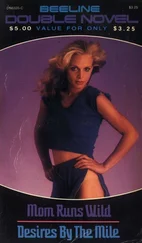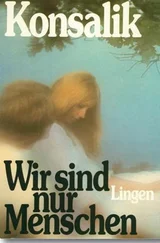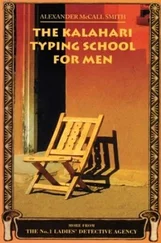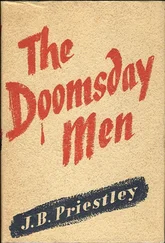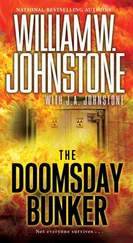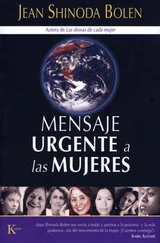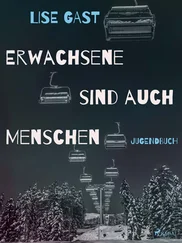Nobel was not alone in this hope. In 1890, an article on ‘War in the Future’ predicted that in coming conflicts whole regiments would be ‘annihilated’ at a stroke. The new sciences of destruction meant, said the writer of the article, that ‘none but the best troops will endure the prolonged and severe trial to their nerves’. 3Within a generation these predictions had begun to be realized.
According to historian John Bourne, World War I was the first modern war, the result of ‘a century of economic, social and political change’. 4Advances in technology, such as the electric telegraph, telephones, typewriters, railways and the internal combustion engine, meant that armies could be mobilized quicker than ever before. Military inventions such as machine guns and quick-firing rifled cannon allowed armies to deploy fearsome firepower. As one writer correctly anticipated in 1891, attackers could be ‘mown down as corn falls, not before the sickle, but the scythe’. 5Machine guns and improved artillery forced soldiers to take shelter in trenches. Then poison gas and high explosive shells were invented to drive them back out again.
Even the appearance and role of the infantry changed in the course of the war:
In 1914 the British soldier went to war dressed like a gamekeeper in a soft cap, armed only with rifle and bayonet. In 1918 he went into battle dressed like an industrial worker in a steel helmet, protected by a respirator against poison gas, armed with automatic weapons and mortars, supported by tanks and ground-attack aircraft, and preceded by a creeping artillery barrage of crushing intensity. 6
The military required devastating force to guarantee victory, and the key to ever greater firepower lay in the hands of the scientist.
If physics – especially atomic physics – was the science of World War II, then chemistry was the science of World War I. The German public in particular was fully aware of the key role played by their chemists, such as Fritz Haber. In 1915 The Times reported one German civilian as saying: ‘The health and physical welfare not merely of the troops in the field but of the nation at large, and the security of the Empire, rest upon our chemists’ shoulders.’ 7
Before the war, Haber’s process for synthesizing ammonia, which allowed nitrogen to be harvested from the air, was rightly hailed as a great breakthrough. As populations rapidly increased across Europe, there arose an urgent need for artificial, nitrogen-based fertilizers. In 1898, Sir William Crookes had conjured up a Malthusian demon: unless chemists could find a way to utilize the nitrogen in the air around us, ‘the great Caucasian race will cease to be foremost in the world, and will be squeezed out of existence by races to whom wheaten bread is not the staff of life’. 8
It was Haber who saved Europe from hunger. His revolutionary method for capturing atmospheric nitrogen, discovered in 1911 and quickly developed on an industrial scale by Carl Bosch at the Badische Anilin-und Soda-Fabrik (better known today as BASF – the ‘Chemical Company’, as their advertising puts it), gave the world for the first time cheap and plentiful artificial fertilizer. But as well as being necessary for healthy plants, nitrogen is an essential ingredient of explosives, an irony Tony Harrison explores in his witty yet powerful play about Fritz Haber, Square Rounds : ‘The nitrogen you brought from way up high / now blows the men you saved into the sky.’ 9(Haber would have been delighted that Harrison wrote his play in verse, for the cultured chemist loved versifying, even in his laboratory.)
It has been estimated that without Haber’s process for manufacturing ammonia, Germany would have exhausted its supplies of explosives within a year. Rather than bringing war to a speedy end, science prolonged the slaughter. In Harrison’s play, Haber washes his hands of responsibility for this: ‘I’m only the inventor how can I guarantee / no one will turn my nitrates into TNT?’ 10
Harrison memorably describes Fritz Haber as ‘the Prospero of poisons, the Faustus of the front’. 11Every German soldier marched off to the mechanized slaughter of World War I with a copy of Goethe’s Faust in his knapsack. In Goethe’s classic play based on the life of the sixteenth-century alchemist, Faust’s insatiable lust for knowledge raises awkward questions about the modern quest for scientific understanding. Haber was just as passionate as Faust about uncovering nature’s secrets, and like him Haber also failed to grasp the human cost of his search. Scientific knowledge is worthless – even dangerous – without self-knowledge, suggests Goethe. That is an important but often overlooked moral for the technoscientific age in which we now live.
In October 1914, when Frederick Soddy gave his inaugural lecture at Aberdeen University, he used Haber’s process for taking nitrogen from the air as an example of how science could be ‘used for evil as well as good’. There was, he said, no better evidence of this than the use of ‘scientific weapons of destruction’ in the war that had just begun. 12Soddy’s real, but premature, fear was that the secret of atomic power was just around the corner. As early as 1904 he had predicted that whoever discovered how to release the energy of the atom would have ‘a weapon by which he could destroy the earth if he chose’. 13But before atomic bombs became a threat, chemistry had yet to do its worst.
For the Hampshire poet Edward Thomas, Easter 1915 was not a time of celebration as it should be, but of mourning:
The flowers left thick at nightfall in the wood
This Eastertide call into mind the men,
Now far from home, who, with their sweethearts, should
Have gathered them and will do never again. 14
For those men far from home – like Thomas himself, who was killed at Arras in 1917 – the war was about to become still more terrible. When Fritz Haber’s new weapon was first used a couple of weeks after Easter, the Allies didn’t know what had hit them. First carbon monoxide gas was suggested. Then, due to the yellow colour of the cloud, sulphur dioxide. Ironically, this gas – which produces spasms of coughing – had first been proposed as a weapon a century before by a British naval officer.
In 1812, Thomas Cochrane, tenth Earl of Dundonald, suggested using fireships laden with sulphur as a way of flushing Napoleon’s troops out of French coastal fortifications. Although a governmental committee rejected the plan as inhumane, the idea did have enough military potential to merit keeping it top secret. Cochrane doggedly resurrected his plan in subsequent campaigns up to the 1850s, and it was also considered for use in the Crimean War. By then the British even had a defence against chemical weapons. In 1854, the industrial chemist John Stenhouse proudly showed off his charcoal respirator to the Royal Scottish Society of Arts. It was, he said, a defence against infectious ‘miasmas’ and the ‘suffocating bombshell’, invented as a result of ‘the longing for a short and decisive war’. 15
But Thomas Cochrane was not the first chemical warrior. The Byzantine navy had used a chemical weapon against Arab ships in AD 673. It was an incendiary whose secret composition remains unknown to this day, but was probably a fiery mix of naphtha or sulphur and quicklime. 16The multi-talented Leonardo da Vinci, who was a gifted military engineer as well as a great artist, invented a ‘deadly smoke’ (in effect a tear gas) consisting of a shell containing sulphur and arsenic dust. 17And much later, in the American Civil War, there were many plans for chemical weapons, including chlorine gas shells.
But if the idea of chemical warfare was not new, the scale of the attack at Ypres in 1915 certainly was. According to Samuel Auld, the British officer and chemist who saw the first gas attack, it ‘left a battlefield such as had never been seen before in warfare, ancient or modern, and one that has had no compeer in the whole war except on the Russian front.’ A deserter had warned the Allies that mysterious steel cylinders were being readied for an attack with a terrible new weapon. ‘No one believed him at all, and no notice was taken of it,’ said Auld bitterly. 18Soldiers were not issued with gas masks, even though the technology had existed for sixty years. After the attack, the Daily Mail had to appeal to the women of Britain to make homemade face masks for their men at the front. The upmarket department store Harrods encouraged its wealthy customers to make ‘Respirators for the Troops’, advertising products ‘as per official requirements’, such as ‘absorbent cotton wool covered gauze, with wide elastic band, 3/9 per doz’. 19The appeal was successful and millions of masks were made. As a defence against poison gas they were worse than useless.
Читать дальше


